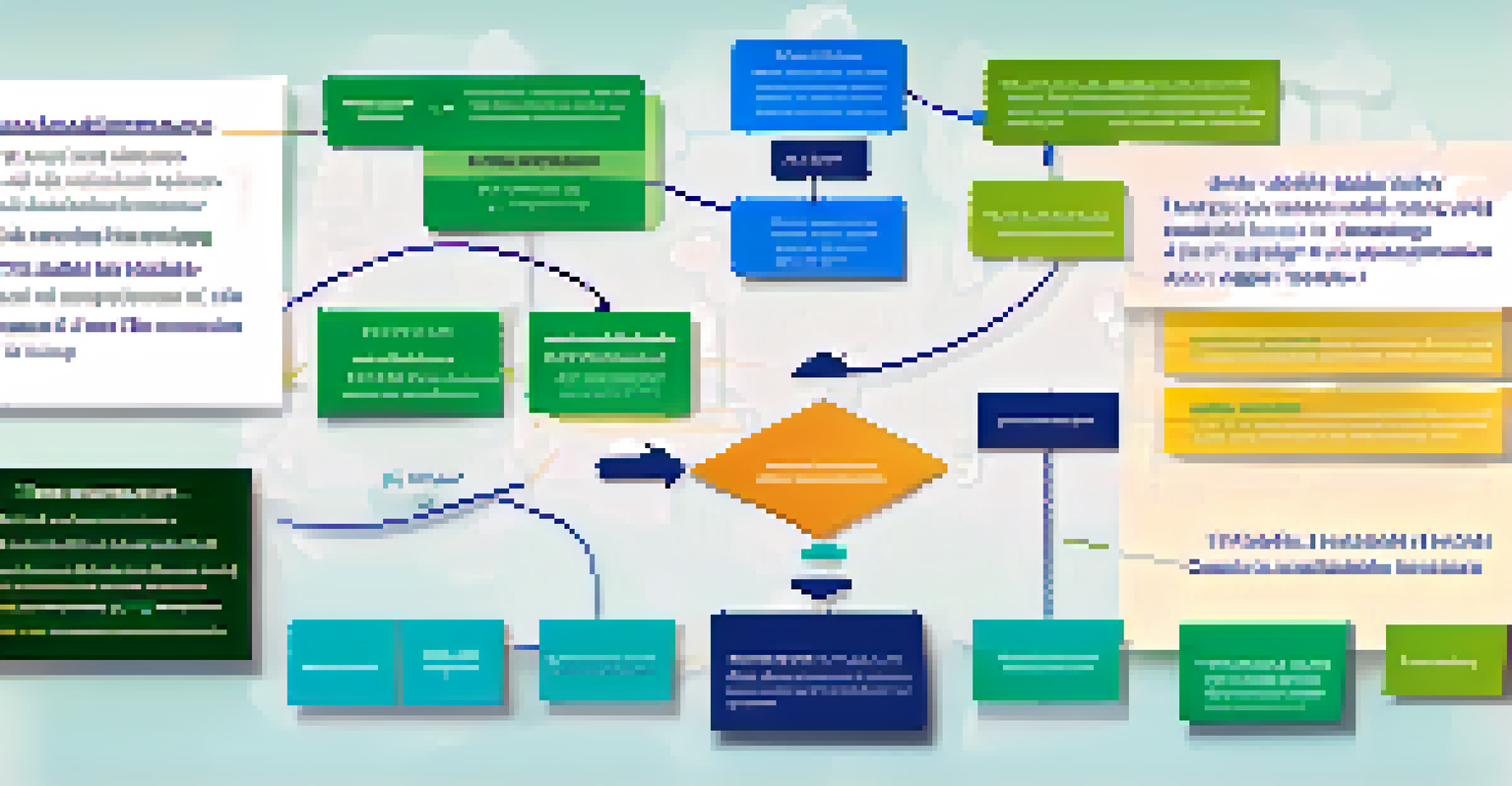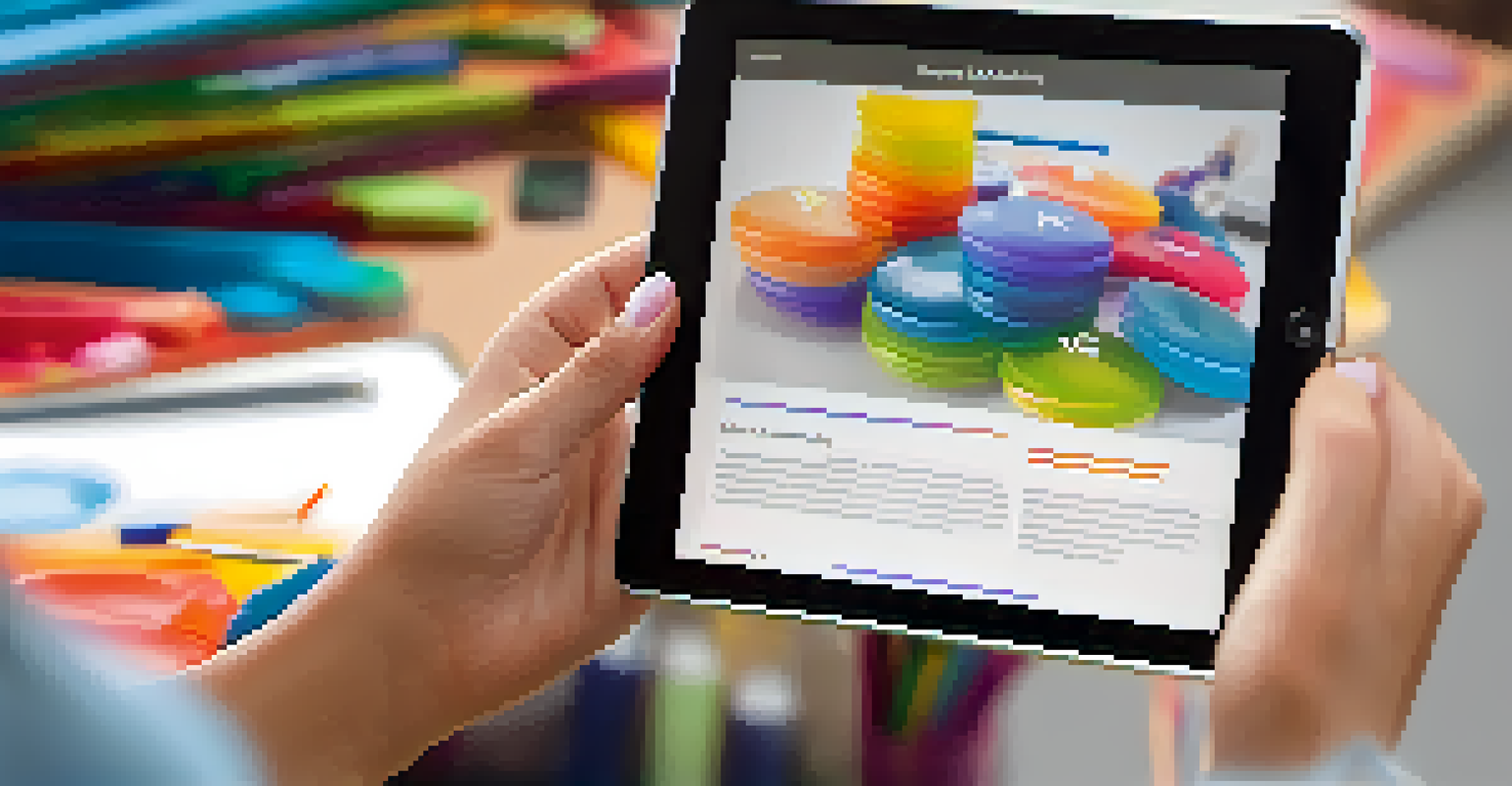The Impact of Adaptive Learning on Student Performance Metrics

Understanding Adaptive Learning in Education
Adaptive learning is a teaching method that modifies the educational experience based on individual student needs. Imagine a classroom where the lessons adjust in real time, responding to a student's strengths and weaknesses. This personalized approach helps students engage more deeply with the material, potentially leading to improved outcomes.
The future of education is not about the teacher, it's about the student and their individual learning path.
The core principle of adaptive learning is that no two students learn the same way. By utilizing data and technology, educators can offer a tailored learning path for each student. This could involve adjusting the difficulty of the material or providing additional resources to reinforce concepts.
As schools increasingly adopt technology, adaptive learning systems are becoming more prevalent. These systems analyze student performance metrics, allowing teachers to intervene when necessary and support students in a more impactful way.
The Role of Data in Adaptive Learning
Data plays a crucial role in the effectiveness of adaptive learning. By collecting information on student performance, educators can identify trends and adjust their teaching strategies accordingly. For instance, if a student struggles with math concepts, the system can provide targeted exercises to help them improve.

This data-driven approach not only aids individual learning but also informs broader instructional practices. Teachers can analyze aggregated data to identify which topics most students find challenging, allowing for timely curriculum adjustments. This ensures that the learning experience is continually optimized.
Personalized Learning Enhances Engagement
Adaptive learning tailors educational experiences to individual students, fostering deeper engagement and reducing frustration.
Moreover, adaptive learning systems can provide instant feedback to students. This immediacy can motivate learners to engage more with the material, as they are able to see their progress and areas needing improvement in real time.
Enhancing Engagement Through Personalization
One of the standout benefits of adaptive learning is its ability to enhance student engagement. When lessons are customized to fit individual learning styles, students are more likely to remain interested and invested in their education. Think of it as having a personal trainer who tailors workouts to fit your specific goals.
Data is the new oil, and in education, it fuels personalized learning.
This personalized approach can also reduce frustration and anxiety among students, as they are not stuck in a one-size-fits-all learning environment. Instead, they can progress at their own pace, which fosters a more positive attitude towards learning. When students feel confident, they are more likely to take risks and explore new concepts.
Additionally, adaptive learning fosters autonomy in students. They are encouraged to take charge of their learning journey, making decisions about what they need to focus on. This empowerment can lead to greater motivation and improved performance metrics.
Measuring Student Performance Metrics Effectively
Performance metrics are crucial in evaluating the effectiveness of adaptive learning. Common metrics include test scores, completion rates, and engagement levels. By measuring these factors, educators can gain insights into how well students are absorbing the material and where adjustments may be necessary.
Furthermore, adaptive learning systems allow for ongoing assessment rather than relying solely on traditional testing methods. This continuous feedback loop enables more timely interventions, helping students stay on track. For example, if a student is falling behind, the system can alert the teacher to provide additional support.
Data-Driven Insights Improve Teaching
Utilizing data allows educators to identify trends and adjust teaching methods, ensuring a more effective learning environment.
Ultimately, effective measurement of performance metrics helps educators make informed decisions. By understanding which approaches work best for their students, they can refine their teaching methods and enhance the overall learning experience.
The Impact on Diverse Learning Needs
Adaptive learning is particularly beneficial for students with diverse learning needs. It caters to a wide range of abilities, ensuring that every student can access the curriculum in a manner that suits them best. For example, a student with dyslexia may require different resources than a high-achieving peer.
By addressing these varied needs, adaptive learning promotes inclusivity in the classroom. This approach not only helps struggling students catch up but also challenges advanced learners to push their boundaries. The key is to create an environment where all students can thrive.
Furthermore, when adaptive learning tools are used, teachers can better understand the unique challenges faced by each student. This understanding allows for more tailored support and resources, ultimately improving performance metrics across the board.
Challenges and Considerations in Adaptive Learning
While the benefits of adaptive learning are substantial, there are challenges to consider. One major concern is the reliance on technology, which may not be accessible to all students. This digital divide can hinder the effectiveness of adaptive learning initiatives, making it crucial for schools to provide equitable access.
Additionally, educators must be adequately trained to implement adaptive learning systems effectively. Without proper training, teachers may struggle to leverage these tools to their fullest potential. Therefore, ongoing professional development is essential to help teachers navigate new technologies.
Inclusivity for Diverse Learning Needs
Adaptive learning supports students with varying abilities, promoting an inclusive classroom where every learner can thrive.
Finally, there is always the risk of overemphasizing data to the detriment of the human element in teaching. While metrics are useful, they should complement rather than replace the personal connections between students and educators.
Future Trends in Adaptive Learning
As technology evolves, the future of adaptive learning looks promising. Emerging trends include the integration of artificial intelligence (AI) to create even more personalized learning experiences. AI can analyze vast amounts of data, allowing for more nuanced adjustments to educational content.
Moreover, the rise of gamification in adaptive learning environments is creating engaging and interactive experiences. By turning learning into a game, students may feel more motivated to participate and achieve their goals. This playful approach can make challenging subjects feel more accessible.

Finally, we can expect to see more collaboration between educators and tech developers to ensure adaptive learning tools are user-friendly and effective. This partnership will be vital in creating sustainable solutions that benefit both students and teachers.